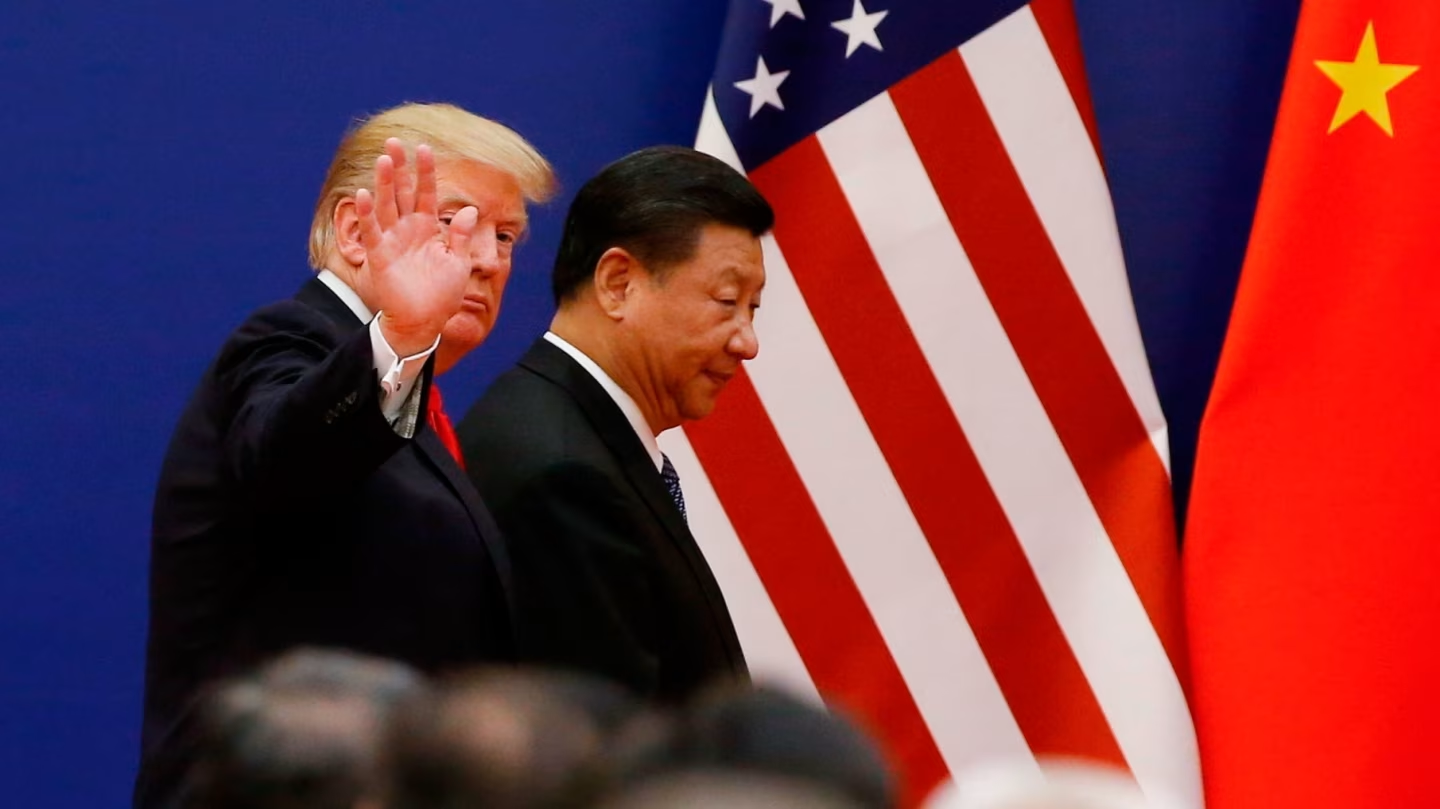Trade war 2025: China and the US intensify tariff confrontation
4 April 15:47
On April 4, 2025, the Chinese government announced a sharp turn in US-China trade relations, announcing a 34% tariff on all US imports, which will take effect on April 10. This was reported by "Komersant Ukrainian" with reference to the New York Post.
This decision was a direct response to Washington’s unilateral tariffs on Chinese goods, a move initiated by the administration of President Donald Trump as part of his updated America First trade doctrine.
This development means not just another tit-for-tat exchange in tariff policy, but a potential systemic break in global economic interdependence that could alter trade flows between the world’s two largest economies.
Why did China react this way?
The catalyst for China’s radical tariff decision was President Trump’s tariff policy on Chinese exports announced earlier in March 2025. The US administration justified the tariffs as a means of addressing “chronic trade imbalances” and “unfair practices” in areas such as intellectual property, industrial subsidies, and forced technology transfers. Washington also accused Beijing of covert economic support for Russia and maintaining “non-transparent” economic ties with sanctioned entities.
China, however, categorically denied any violation of international trade protocols and characterized the US actions as “economic coercion” and a violation of the World Trade Organization (WTO) rules.
Beijing responded with what officials called a “mirror response” – introducing identical tariff coverage and rates targeting all U.S. imports without exception. According to China’s Ministry of Commerce, the 34% rate was calibrated to match the estimated average increase in import costs faced by Chinese exporters under the impact of Trump’s tariffs.
Read also: The US imposed “reciprocal duties”: Trump hits the EU and Ukraine, but not Russia
Strategic countermeasures: rare earth elements and sectoral bans
China did not stop with tariffs. Using its dominant position in the rare earths industry, official Beijing has imposed strict export controls on a group of critical materials, including samarium, gadolinium, dysprosium, and neodymium. These minerals are indispensable for production in industries such as
- aerospace and defense industries;
- renewable energy (e.g., wind turbines, solar inverters)
- consumer electronics (e.g., smartphones, hard drives, electric vehicles)
- advanced medical equipment.
China’s share of global rare earth metal processing exceeds 80%, giving it significant leverage over Western supply chains. According to Eurasia Group analysts, the restrictions on rare earth elements are a “geo-economic pressure valve” that Beijing can repeatedly use to obtain concessions or further retaliatory actions.
In addition, several US firms, especially in the technology and defense sectors, have been added to China’s trade control list. Among them:
- Skydio Inc;
- High Point Aerotechnologies (defense systems);
- QuantumSpace Corp. (satellite components).
These firms have been accused of “posing risks to national sovereignty” through their involvement in arms sales deals related to Taiwan, which is a sensitive red line for Beijing.
Implications for businesses and markets
The double whammy of tariffs and export restrictions is expected to disrupt business operations in many industries. According to preliminary estimates by the China-U.S. Business Council, U.S. exporters will lose more than $50 billion in annual market access, with a particularly negative impact on industries such as
- agribusiness (corn, soybeans, beef, pork, poultry)
- automobiles and aircraft parts;
- pharmaceuticals and medical equipment;
- semiconductors and robotics.
Global financial markets reacted with noticeable tension: the S&P 500 index fell by 2.3%, the Hang Seng index by 3.8%, and key commodity indices showed volatility, especially in metals and agricultural commodities. Investors are now considering the possibility of a prolonged trade cold war, which could lead to disruptions in global supply chains.
Read also: Apple under pressure: how Trump’s new tariffs are changing the global iPhone market
Political messages and strategic goals
The scale of China’s retaliation reflects more than economic friction – it underscores a shift to strategic deterrence in trade diplomacy. By targeting all sectors, Beijing is signaling that no segment of the U.S. economy will be exempt from reprisals. Moreover, this move serves as a warning to other countries considering joining the unilateral US policy.
This approach also strengthens China’s internal narrative of resistance to “external containment.” With the recent conclusion of the 2025 National People’s Congress, the Chinese Communist Party is eager to demonstrate internal unity and confident leadership, especially in the face of external pressure.
What to expect next?
Economic experts and analysts predict that the WTO will be drawn into the dispute, although its weakened enforcement mechanism may limit its ability to mediate. In the meantime, analysts expect the following scenarios to occur:
- bilateral negotiations will reach a deadlock, as both sides prefer political optics to compromise;
- corporate reshoring and separation accelerate, and companies diversify their activities away from the Chinese and American markets;
- third country economies such as Vietnam, Mexico, and India benefit from the reorientation of trade;
- consumer prices in both countries are rising amid import dependence.
Thus, China’s imposition of a 34% tariff on U.S. imports, combined with restrictions on rare earth metals and company-level sanctions, marks a turning point in global trade policy. What was once a series of tit-for-tat measures has now turned into a strategic confrontation with implications for technology, security, and supply chain resilience around the world.
Читайте нас у Telegram: головні новини коротко









